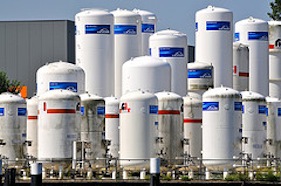Storage
Introduction
Storage is necessary to provide energy when it is needed, rather than when it is generated. For example, London Array generates wind energy when the wind blows and PV panels generate electricity when the sun shines. More electric is consumed in Winter than in Summer so energy storage in the form of Hydrogen or natural gas are placed in geological cavities in large amounts to provide energy when needed at times of high energy demand and low renewable supply.
Benefits
Why store Hydrogen as an energy resource? Because Hydrogen is a massive natural resource which is sustainable, because four fifths of the planet is covered in water. More than ninety percent of the universal matter is Hydrogen. Hydrogen can be a source of energy when separated from other molecules. Safety issues on Hydrogen as a gas when volumetric storage have been overcome using saline caves or similar large cavities. Consider, there are four Hydrogen molecules in every molecule of methane. The list of storage options include depleted gas and oil fields, aquifer formations or natural or artificial salt caverns.
Large scale Hydrogen production
For much of the last century under the Chlor-electrolysis process Hydrogen was produced in large volumes as a by-product and stored in large salt cabins under saline at 40 bar pressure. Hydrogen addition to natural gas pipes has been practised for many years resulting in Hythane (CH4+H2). Geometrical volumes greater than 1 million cubic meters have been stored in the North of England for decades without accident.
Giga Joules of Hydrogen can be produced using natural methods to enable energy generation during Winter months.
If you require consultancy services or further information please click here.





